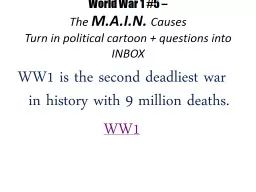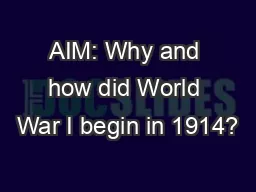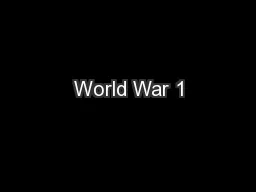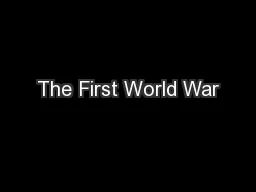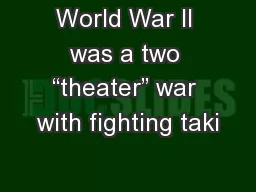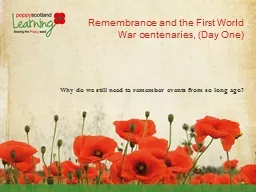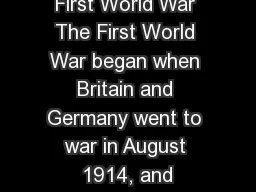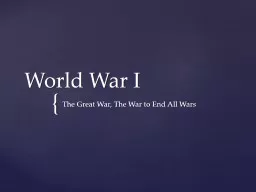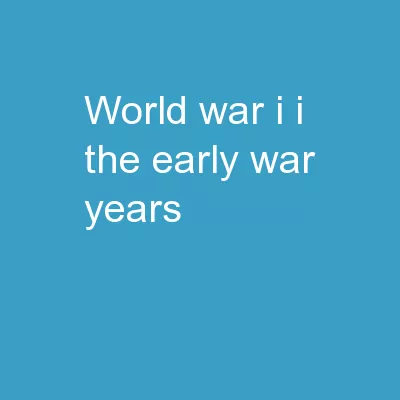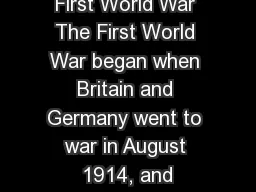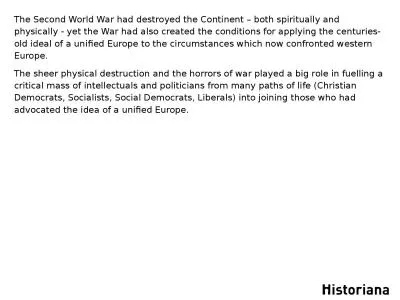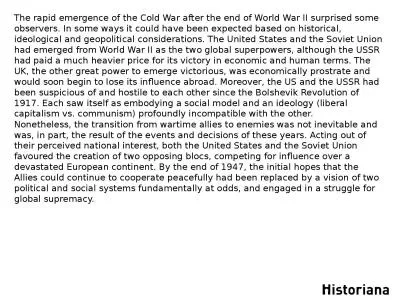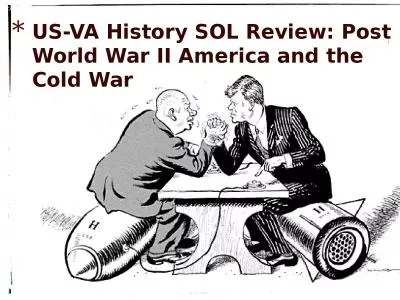PPT-World War
Author : debby-jeon | Published Date : 2017-06-17
1 7 The MAIN Causes Who started this war M ilitarism Build up military To compete countries needed strong amp new weapons amp standing armies Kaiser Wilhelm
Presentation Embed Code
Download Presentation
Download Presentation The PPT/PDF document "World War" is the property of its rightful owner. Permission is granted to download and print the materials on this website for personal, non-commercial use only, and to display it on your personal computer provided you do not modify the materials and that you retain all copyright notices contained in the materials. By downloading content from our website, you accept the terms of this agreement.
World War: Transcript
Download Rules Of Document
"World War"The content belongs to its owner. You may download and print it for personal use, without modification, and keep all copyright notices. By downloading, you agree to these terms.
Related Documents

